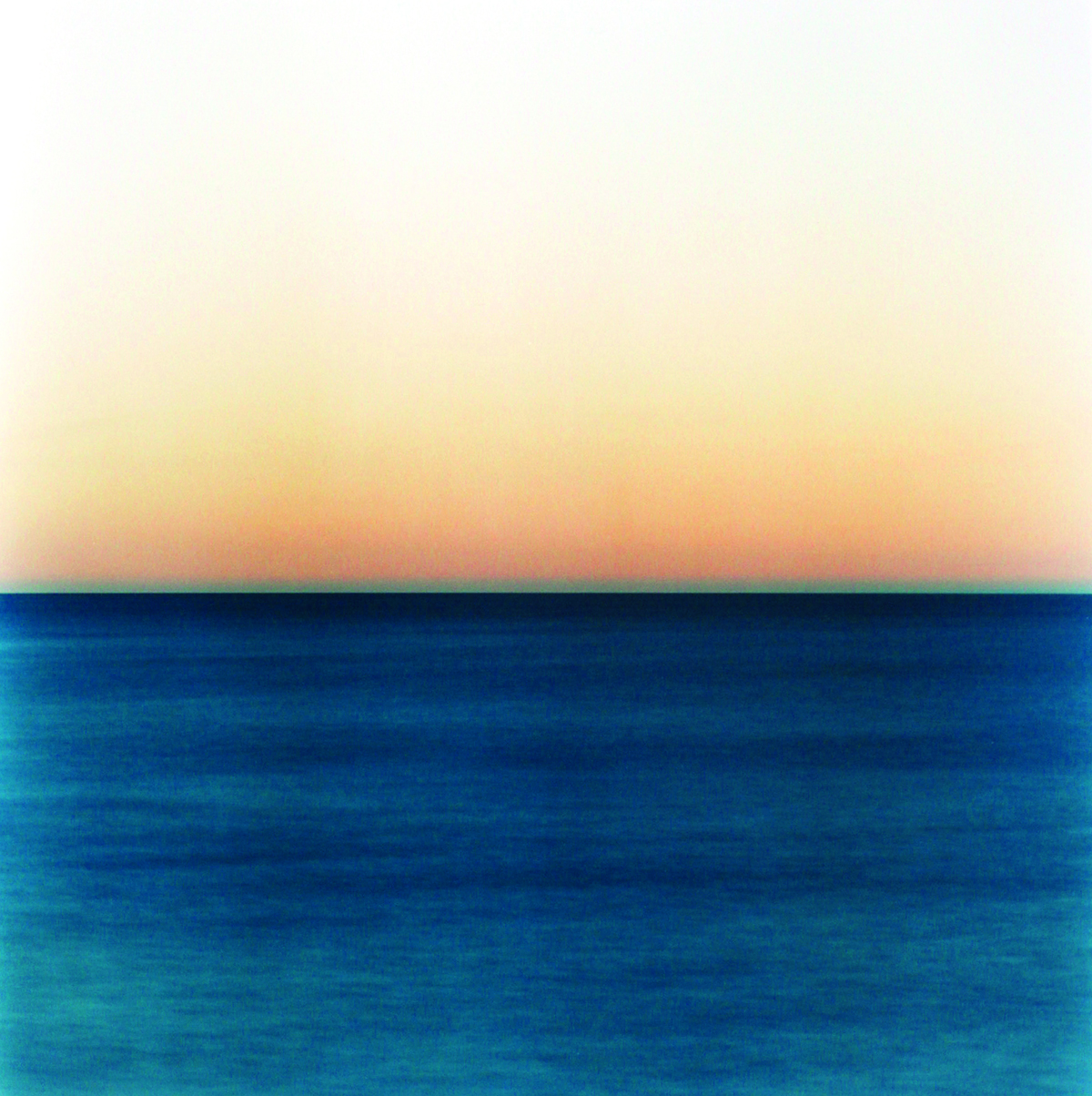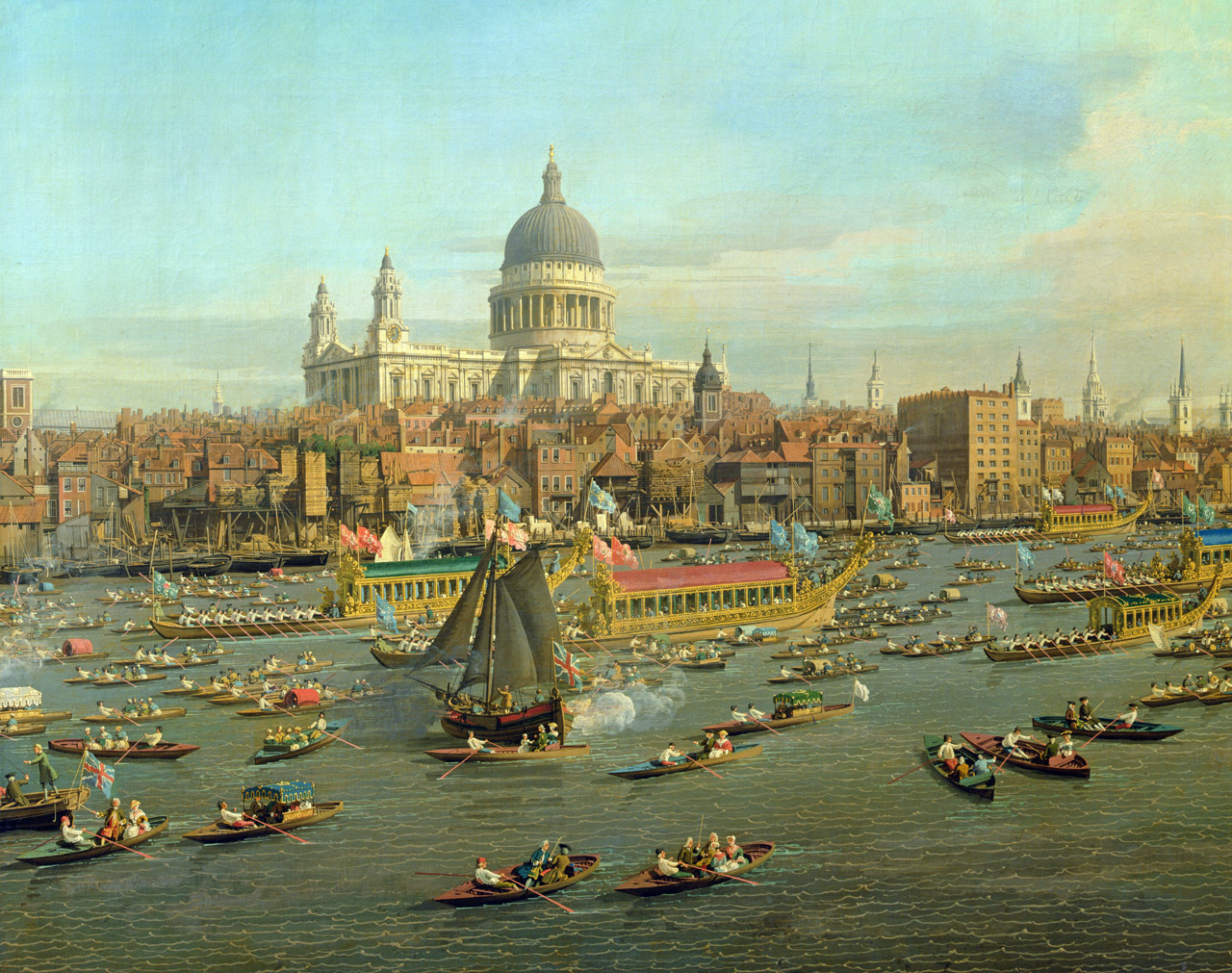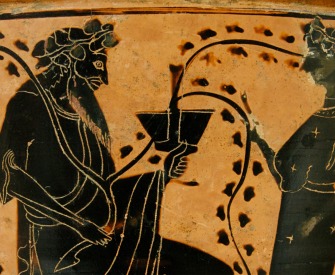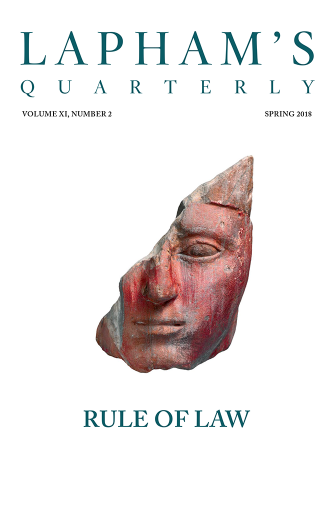The snotgreen sea. The scrotumtightening sea.
—James Joyce, 1922A Winelike Sea
Homer’s famous “wine-dark sea” has left scholars wondering: how did the Greeks truly see the sea?
By Caroline Alexander

Telemachus and the Nymphs of Calypso, by Angelica Kauffmann, 1782. The Metropolitan Museum of Art, Bequest of Collis P. Huntington, 1900.
The famous likening of the sea to wine has endured through ages, from at least the late eighth century bc, the composition date of the Iliad and the phrase “wine-dark” is now so securely lodged in our collective consciousness as to be known even by people who have never read Homer. It is not the Odyssey, Homer’s sailor’s saga, but the earlier, land-bound Iliad, set on Trojan soil, that first launched one of the best-known of all Homeric epithets on the world. The phrase occurs here only six times, the same incidence as “tumultuous” or “loud-sounding,” while the less vivid “gray-gleaming” is used a dozen times. Yet it is “wine-dark” that has stuck with us, and it is clear why. The phrase is alluring, stirring, and indistinctly evocative. It is also, strictly speaking, incomprehensible, and for all the time the phrase has been relished, readers and scholars have debated what the term actually means. In what way did the sea remind Homer of dark wine? And of the myriad ways to evoke the sea, why compare it to wine at all? A translator’s task is to render into English both the plain meaning and the sensibility—the felt meaning—of a Homeric phrase or word, and so it is a duty, albeit a perilous one, to plunge deeper into this celebrated sea phrase, and grope for clarity. Impertinent questions must be floated: what does it mean—and is there possibly a better rendering?
In ancient Greek, the phrase is oínopa pónton—oínopa being a compound of oínos, meaning “wine,” and óps, meaning “eye” or “face”—literally, “wine-faced,” and thus “wine-ish,” or “winelike.” The enduring “wine-dark” was established in the Greek-English Lexicon famously compiled by Henry George Liddell and Robert Scott and first published in 1843. Liddell, vice chancellor of Oxford University, dean of Christ Church, and one of the most famous Greek scholars of his day, was also the father of Alice Liddell, the muse for Lewis Carroll’s Alice’s Adventures in Wonderland. (One imagines the two men busy at their different labors across the quad, the dean seeking to mine and render with exquisite exactitude the innermost meanings of the vocabulary of the ancient Greeks, Carroll plumbing the English language for the inspired nonsense of “Jabberwocky.”) According to Liddell and Scott, oínopa means “wine-colored” and is used by Homer, in both the Iliad and the Odyssey, only of oxen and the sea. When used of the sea, the authors suggest, it is best rendered “wine-dark,” meaning, within its broader context, “the color of dark wine.” They do not hazard what Homer meant by this phrasing, and a survey of principal modern English translations provides neither consensus nor clarity. Richmond Lattimore, in his landmark version of 1951, used, inexplicably, “the wine-blue sea.” Robert Fitzgerald in his translation of 1974 tweaked the dictionary to the collapsed “winedark,” while Robert Fagles stayed true to Liddell and Scott. Other renderings are Stanley Lombardo’s “the sea’s gray wine,” and, most recently, Stephen Mitchell’s “the sea,” in a translation that ditches most epithets and even many simple adjectives.

Ripple, by Sarah Anne Johnson, 2011. C-print, marker and photo-spotting ink. © Sarah Anne Johnson, courtesy the artist and Julie Saul Gallery.
This wine-dark sea has haunted many imaginations. Nineteenth-century British prime minister William Gladstone posited in Studies on Homer and the Homeric Age that the Greeks had a form of color-blindness, their optical palette limited to black and white, and possibly red. Another theory was that a type of algal bloom, red tide, made the Homeric-era Aegean wine-red. In the 1980s, the view was advanced that since the ancient Greeks mixed their wine with water, the alkaline water common to the Peloponnesus would have turned red wine to blue. Another view came from a retired classicist who watched “an unusually vivid sunset” over the sea at the mouth of the Damariscotta River, in Maine, on an evening when the sky was filled with ash that had floated east from the eruption of Mount St. Helens, and was struck by the color of the sea “reflected in the outgoing tide of the dark estuary.” The sea, he said, was the color of Mavrodaphne, a wine of deep purple-brown hue, and the epithet for Homer’s wine-colored sea, he speculated, meant “sunset-red.” Finally, many contend that the phrase is meaningless, an empty expression with a poetic ring whose purpose is only to fill out the metrical requirements of a line of the verse.
The image Homer hoped to conjure with his winelike sea greatly depended upon what wine meant to his audience. While the Greeks likely knew of white wine, most ancient wine was red, and in the Homeric epics, red wine is the only wine specifically described. Drunk at feasts, poured onto the earth in sacred rituals, or onto the ashes around funeral pyres, Homeric wine is often mélas, “dark,” or even “black,” a term with broad application, used of a brooding spirit, anger, death, ships, blood, night, and the sea. It is also eruthrós, meaning “red” or the tawny-red hue of bronze; and aíthops, “bright,” “gleaming,” a term also used of bronze and of smoke in firelight. While these terms notably have more to do with light, and the play of light, than with color proper, Homeric wine was clearly dark and red and would have appeared especially so when seen in the terracotta containers in which it was transported. “Winelike sea” cannot mean clear seawater, nor the white splash of sea foam, nor the pale color of a clear sea lapping the shallows of a sandy shore.
The Greeks knew the sea intimately, for seafaring was the engine of their culture. As late as 408, Synesius, the bishop of Ptolemais in Libya, invoked his distance from the sea to convey how far he lived from civilization. “Do not think that I am exaggerating,” he wrote, “when I say that people here do not take to the sea, even for the purpose of getting their salt.” He felt, he said, like Odysseus, who, at the end of his wanderings, is sent by an oracle among “men who know not of the sea, nor eat food mixed with salt.” To Xenophon and the army of the Ten Thousand, struggling back from Babylon, the cry “The sea! The sea!” meant they were in reach of home. To live far from the sea was to live in relative isolation, for the sea alone was the highway for ideas as well as commerce. It was also feared—the Greeks, like all seagoing peoples, knew that sea voyages could be perilous. “If ever you turn your misguided heart to trading and wish to escape from debt and joyless hunger, I will show you the measures of the loud-roaring sea,” wrote Hesiod, who is believed to have composed his didactic poem Works and Days a generation after Homer’s Iliad. Only men desperate for wealth, in his view, risk taking to sea; “in their ignorance men do even this, / for wealth means life to poor mortals; but it is fearful to die among the waves.”
The Iliad evokes the sea in dramatic scenes and similes across the range of human experience: men at sea, lonely shorelines, sea storms, waves of men crashing into battle. Its presence is asserted early, in the first book of theIliad’s twenty-four, where, although most action takes place within the Achaean camp, evocation of the sea is crucial to some half a dozen scenes. The first mention occurs after an old Trojan priest leaves the Achaean camp, having failed to persuade King Agamemnon to accept ransom for his captured daughter:
And in silence he went along the shore of the tumultuous sea.
Then going apart, the old man prayed fervently
to lord Apollo.
In response Apollo sends a withering plague to punish the Achaeans for refusing his priest, and Agamemnon finally capitulates, calling for his men to prepare her departure:
“Come let us drag one of our dark ships to the bright salt sea,
and assemble in it suitable rowers, and place the sacrifice in it,
and embark the girl herself, Chryseis of the lovely cheeks.”
Later, a small band of Achaeans returning from this mission under the leadership of the sailor Odysseus experience the flying joy of sailing a fast boat on a fine day:
They stepped the mast and spread the glistening sails,
and the wind blew gusts in the middle of the sail, and around
the cutwater the bow wave, shimmering dark, sang loud as the ship proceeded.
She swept over the swell, making her course.
When Achilles receives word that he must give up his own captive woman to compensate for Agamemnon’s loss, and loss of face, he reminds his commander, in a blistering speech, that:
“It was not on account of Trojan warriorsI came
to wage battle here, since to me they are blameless
—never yet have they driven off my cattle, or my horses,
nor ever in Phthia whose rough earth breeds warriors
have they destroyed my harvest, since there are many things between us,
both shadowy mountains and clashing sea.”
His woman prize confiscated, Achilles calls upon his mother, Thetis, a nymph of the sea, imploring her to seek redress from Zeus; it is at this moment that he stretches forth his hands in imprecation to the “winelike sea.” (The rendering of “winelike” here is based on a new edition of the Greek text of the Iliad, first published in 1998. Instead of oínopa, earlier editions had apeírona, “infinite, boundless” sea, which was followed in almost all previous translations.) Hearing her son, Thetis rises “from the gray salt sea, like mist.” We are still only in book one.
None of these references are gratuitous, nor merely poetic. The sea not only sets the scene of action, but also the mood. A lonely shore is the background for a priest’s prayerful grief, while the tumult of waves mirrors the unrest in his mind. A “bright” sea promises a successful voyage: to men sailing home from a righteous mission, the smiling sea is the friendly, broad road of travel. “Clashing” waves evoke a dangerous distance between Achilles’ homeland and Troy. And the sea’s gray depths are where supernatural beings, forces of nature, abide.

Wake, by Iain Stewart, 2000. © Iain Stewart, courtesy of Julie Saul Gallery.
The sea’s familiar attributes are also drawn upon in the magnificent word pictures of the Homeric similes to make vivid those scenes and events of which its audience might have had no firsthand experience, such as ranks of warriors on the march:
As when waves of the sea dash on the thundering shore,
one after another under power of the West Wind moving—
the wave rises first in the open sea, then
shattering on land it roars mightily, and curling as it goes
breaks around the headland, and spatters foam of the salt sea—
so in this way did the ranks of Danaans move one after another
ceaselessly to war.
Just as the English language marks distinct aspects of the sea with distinct terminology, such as sea, ocean, and the deep, so too does Homeric Greek. In the most basic sense, the sea is háls, the same word for “salt,” and is used, according to Liddell and Scott, “generally of shallow water near shore.” The sea as distinct from heaven and land and other water is thálassa, the elemental sea that Achilles evokes to signal the great distance between his home and the Trojans: “Since there are many things between us,/both shadowy mountains and clashing sea.” But the “winelike” sea, the sea that is oínopa, is called pónton—“the open sea,” “deep sea,” “high sea,” the ocean, or what sailors call “blue water.” Indo-European cognates suggest the word’s origin lies in the notion of a “path” or “passage” across the water: “a road where there are obstacles, a crossing,” according to one grammarian. When weeping Achilles looks toward “the winelike sea…stretching forth his hands,” he is reaching for the oínopa pónton, the sea that despite its danger could still provide him passage to the place his thoughts always turn—home.
Homer’s sea, whether háls, thálassa, or póntos, is described as misty, darkly troubled, black-dark, and grayish, as well as bright, deep, clashing, tumultuous, murmuring, and tempestuous—but it is never blue. The Greek word for blue, kuáneos, was not used of the sea until the late sixth or early fifth century bc, in a poem by the lyric poet Simonides—and even here, it is unclear if “blue” is strictly meant, and not, again, “dark”:
the fish straight up from the
dark/blue water leapt
at the beautiful song
After Simonides, the blueness of kuáneos was increasingly asserted, and by the first century, Pliny the Elder was using the Latin form of the word, cyaneus, to describe the cornflower, whose modern scientific name, Centaurea cyanus, still preserves this lineage. But for Homer kuáneos is “dark,” possibly “glossy-dark” with hints of blue, and is used of Hector’s lustrous hair, Zeus’ eyebrows, and the night.
Ancient Greek words for color in general are notoriously baffling: In the Iliad, “chlorós fear” grips the armies at the sound of Zeus’ thunder. The word, according to R.J. Cunliffe’s Homeric lexicon, is “an adjective of color of somewhat indeterminate sense” that is “applied to what we call green”—which is not the same as saying it means “green.” It is also applied “to what we call yellow,” such as honey or sand. The pale green, perhaps, of vulnerable shoots struggling out of soil, the sickly green of men gripped with fear?

London: The Thames on Lord Mayor’s Day (detail), by Antonio Canaletto, c. 1750. The Lobkowicz Collections, Prague Castle, Czech Republic.
Modern examination of the Greek sense of color began with Johann Wolfgang von Goethe, who concluded in his Theory of Colors, published in 1810, like Gladstone after him, that Greek color perception was simply defective. Others looking beyond the Greeks to the ancient world in general discovered astonishing lapses, including the total absence in any ancient text of reference to the sky as blue. Blue, it was theorized, is rare in nature—few people have blue eyes, blue plants are rare—and so this uncommon, difficult to replicate color went unrecognized. Yet the ancient world knew of, and coveted, lapis lazuli; and flowers, such as the cornflower and flax, are in fact blue.
Rather than being ignorant of color, it seems that the Greeks were less interested in and attentive to hue, or tint, than they were to light. As late as the fourth century bc, Plato named the four primary colors as white, black, red, and bright, and in those cases where a Greek writer lists colors “in order,” they are arranged not by the Newtonian colors of the rainbow—red, orange, yellow, green, blue, indigo, violet—but from lightest to darkest. And the Iliad contains a broad, specialized vocabulary for describing the movement of light: argós meaning “flashing” or “glancing white”; aiólos, “glancing, gleaming, flashing,” or, according to Cunliffe’s Lexicon, “the notion of glancing light passing into that of rapid movement,” and the root of Hector’s most defining epithet, koruthaíolos—great Hector “of the shimmering helm.” Thus, for Homer, the sky is “brazen,” evoking the glare of the Aegean sun and more ambiguously “iron,” perhaps meaning “burnished,” but possibly our sense of a “leaden” sky. Significantly, two of the few unambiguous color terms in the Iliad, and which evoke the sky in accordance with modern sensibilities, are phenomena of light: “Dawn robed in saffron” and dawn shining forth in “rosy fingers of light.”
So too, on close inspection, Homeric terms that appear to describe the color of the sea, have more to do with light. The sea is often glaukós or mélas. In Homer, glaukós (whence glaucoma) is color neutral, meaning “shining” or “gleaming,” although in later Greek it comes to mean “gray.” Mélas (whence melancholy) is “dark in hue, dark,” sometimes, perhaps crudely, translated as “black.” It is used of a range of things associated with water—ships, the sea, the rippled surface of the sea, “the dark hue of water as seen by transmitted light with little or no reflection from the surface.” It is also, as we have seen, commonly used of wine.
Ocean. A body of water occupying about two-thirds of a world made for man—who has no gills.
—Ambrose Bierce, 1906So what color is the sea? Silver-pewter at dawn; gray, gray-blue, green-blue, or blue depending on the particular day; yellow or red at sunset; silver-black at dusk; black at night. In other words, no color at all, but rather a phenomenon of reflected light. The phrase “winelike,” then, had little to do with color but must have evoked some attribute of dark wine that would resonate with an audience familiar with the sea—with the póntos, the high sea, that perilous path to distant shores—such as the glint of surface light on impenetrable darkness, like wine in a terracotta vessel. Thus, when Achilles, “weeping, quickly slipping away from his companions, sat/on the shore of the gray salt sea,” stretches forth his hands toward the oínopa pónton, he looks not on the enigmatic “wine-dark sea,” but, more explicitly, and possibly with more weight of melancholy, on a “sea as dark as wine.” Since the Greek happens to use two different words for sea in this particular verse—háls, the salt sea, as well as póntos—the English rendering is best stretched even further:
But Achilles,
weeping, quickly slipping away from his companions, sat
on the shore of the gray salt sea, and looked out to depths as dark as wine.
If communication and trade, the bulwarks of Greek civilization, were seaborne, so were disaster and ruin. The war at Troy was caused, as Hector sharply reminds his brother Paris, when he, Paris, carried Helen off across the sea:
“Were you such a man when in seagoing ships
you sailed the ocean, assembling trusty companions,
and mingling with foreign men led away a beautiful woman
from a distant land—a woman related to spearmen—
mighty ruin to your father and city and all your people,
but great joy to our enemies and disgrace to yourself?”
Later, Helen, remorseful, fantasizes about a seaborne deliverance that could have averted the hated war. “Brother-in-law, of me, an evil-thinking dog that strikes cold fear,” she says to Hector, on what would be the last day he would spend in the city of Troy:
“Would that on the day when first my mother bore me,
some foul-weather storm of wind carrying me had borne me
to a mountain or a swelling wave of the tumultuous sea,
where the wave would have swept me away before these deeds had happened.”
That the sea brings destruction is a truth of history as well as poetry. The Greek Bronze Age that Homer described collapsed around 1200 bc for reasons still debated, but records of the time make anxious reference to “sea peoples” or raiders from the sea. A hint of coming menace is preserved on a clay tablet from the palace archive of Pylos, on the coast of the southwestern Peloponnesus. The palace, it appears, was burned down by the enemy; the inscribed clay tablet, baked in the ensuing blaze, survived because of the conflagration. “Watchers on guard over the coastal lands,” the tablet reads, in the Linear B script of the Mycenaeans. Lists of deployments, of men and places, follow: “Detachment of Maleus at Owitono…thirty men from Oikhalia to Owitono, and twenty…men from Apuka…” One can picture them, those lookouts on the coast, armed, on high alert, staring out to the horizon of a sea as dark as wine.




